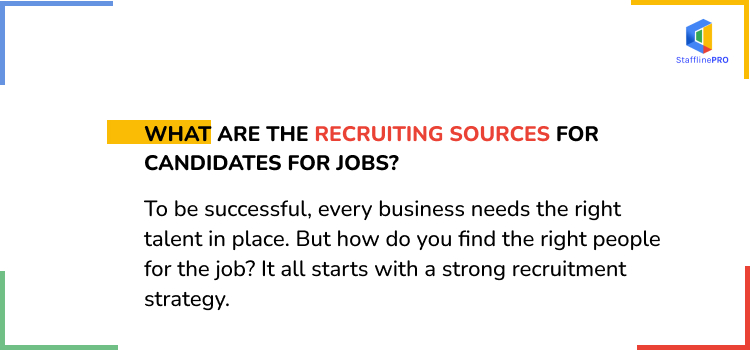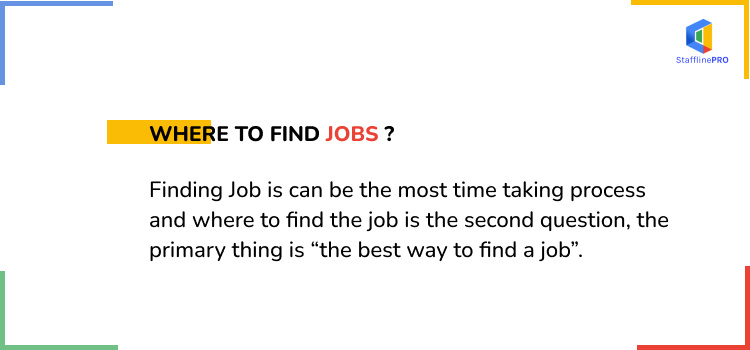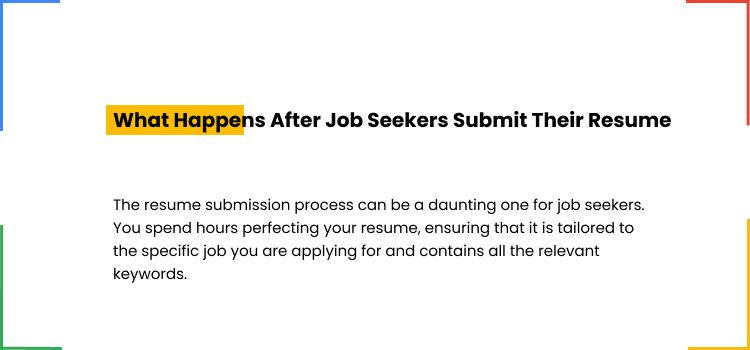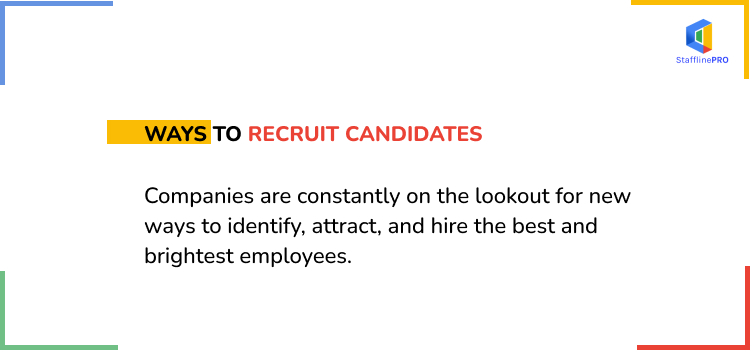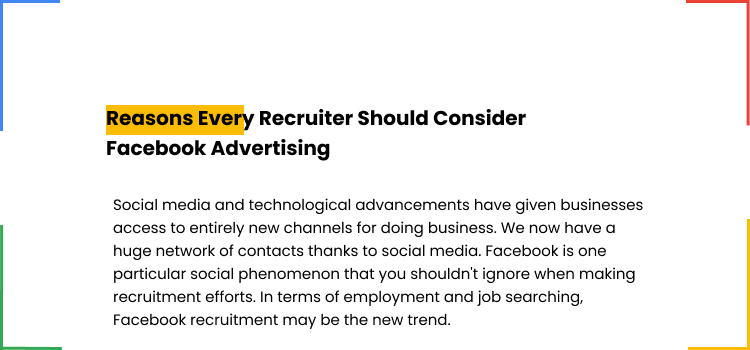What is best: internal orexternal recruitment drives?
There is noone-size-fits-all answer to the question of whether internal or externalrecruitment drives are best. The answer depends on the specific needs of theorganization in question.
Externalrecruitment drives may be necessary when an organization is expanding itsworkforce or when it needs to fill a position that requires special skills orqualifications. Internal recruitment drives, on the other hand, maybe moreeffective when an organization is looking to promote from within or fill aposition that requires a deep understanding of the organization’s culture.
The bestrecruitment strategy for any given organization will depend on several factors,including the organization’s size, structure, and goals. To learn more aboutthe pros and cons of internal and external recruitment drives.
The 12 best recruitment methods
As the warfor talent rages on, organizations are looking for new and innovative ways toidentify, attract and hire the best candidates. Recruitment methods have come along way in recent years, thanks to the advent of new technologies.
There arenow several different recruitment methods that organizations can use to findthe right candidates. However, not all recruitment methods are created equal.Some are more effective than others.
Here wediscuss the 12 best recruitment methods:
1. Direct advertising:
The use ofdirect advertising as a recruitment method is becoming increasingly popular, ascompanies look to target potential candidates more effectively. Directadvertising allows companies to reach a large number of people quickly andeasily, and it can be a very cost-effective way of recruiting new employees.
There areseveral different ways in which companies can use direct advertising to findsuitable candidates. For example, they may place ads in newspapers or online,or they may use direct mailers.
Whateverthe method, the aim of direct advertising is always the same – to reach as manypotential candidates as possible and to encourage them to apply for the job.
If you areconsidering using direct advertising as a recruitment method, then this articleis for you. It explains everything you need to know about direct advertising,including its advantages and disadvantages.

2. Talent pool databases:
A talentpool database (TPD) is a system used by organizations to store and manageinformation on potential candidates for future vacancies. TPDs are commonlyused in the recruitment process to identify and assess candidates with thedesired skills and attributes for a role.
TPDs can beused for a variety of purposes, such as storing resumes and contactinformation, tracking the progress of candidates through the recruitingprocess, and maintaining a record of past applicants.
There areseveral different TPDs available, each with its advantages and disadvantages.The most common TPDs are position-specific, generalist, and subscription-based.
TPDs are avaluable tool for organizations looking to improve their recruiting process. However,it is important to choose the right TPD for your organization’s needs. Thisarticle provides an overview of the different types of TPDs and their pros andcons.

3. Employee referrals:
In today’sjob market, companies are increasingly tur
ning to employee referrals to findqualified candidates. Referred employees tend to stay with the company longerand are less likely to leave within the first year. Additionally, they tend tobe more productive and have better performance reviews.
There areseveral reasons for this. First, referred employees already have a connectionto the company and are more likely to be a good fit. Second, referred employeescome with implicit recommendations from current employees, which can help speedup the hiring process.
If you’relooking for a new job, be sure to take advantage of your current employees’networks. You may just find your dream job!

4. Boomerang employees:
Boomerangemployees are those who leave a company and then come back to work for it againat a later date. Many companies are actively recruiting boomerang employees, asthey can provide a wealth of experience and knowledge.
There are anumber of methods that companies can use to recruit boomerang employees. Onemethod is to reach out to former employees who have left on good terms andexpress interest in their return. Another method is to use social media toidentify potential boomerang employees.
Manycompanies are finding that recruiting boomerang employees is an effective wayto fill vacancies. Boomerang employees often have a strong commitment to thecompany and are familiar with its culture and values. They can also hit theground running, as they have a good understanding of the company’s systems andprocesses.

5. Promotions and transfers:
The mostcommon form of recruitment is when an organization actively searches forcandidates with the required skills and experience to fill a vacant position.This can be done through a variety of methods, such as advertising the vacancyonline or in newspapers, using recruitment agencies, or holding open days.
However,organizations can also fill positions by promoting or transferring existingemployees. This is often seen as a more cost-effective and efficient method ofrecruitment, as the individuals will already be familiar with theorganization’s culture and values.

6. Employment exchanges
Theemployment exchanges are the main source of recruitment for the government job.It is a system wherein the unemployed are registered and their names are kepton a list. The list is then made available to employers who may have vacancies.When a vacancy arises, the employer can approach the exchange and request fornames of candidates who match the required qualifications. The candidates arethen called for an interview and the best candidate is given the job.
Theadvantage of this system is that it is free of charge for both the employer andthe job seeker. It is also a more efficient way of recruiting as it cuts downon the time and effort required to find suitable candidates.
7. Recruitment agencies
Recruitmentagencies use a variety of methods to identify potential candidates for openpositions. Some of the most common methods include job postings,candidatedatabases, employee referrals, and social media.
Jobpostings are the most traditional method of recruitment and involve agenciesposting open positions on job boards or in newspapers. Candidate databases areanother common method and involve agencies maintaining a database of potentialcandidates that they can contact when an open position arises. Employeereferrals are when existing employees of an agency recommend someone for anopen position. Social media is a newer method of recruitment that involvesagencies using platforms like LinkedIn to identify potential candidates.
Each ofthese methods has its own advantages and disadvantages. Job postings are a goodway to reach a large number of potential candidates, but they can betime-consuming. Candidate databases are a good way to quickly identifypotential candidates.
8. Professional organizations
Manyemployers consider professional organizations to be an important factor whenmaking decisions about whom to hire. Joining and participating in aprofessional organization can demonstrate to employers your commitment to yourchosen profession and can help you make important contacts within your field.
There aremany ways to find out about professional organizations. One way is to ask yourprofessors or other professionals in your field if they know of anyorganizations that would be helpful for you to join. You can also search theinternet or look in the library for directories of professional organizations.Once you have found a few organizations that interest you, visit their websitesand see if they have any information about how to become a member.
9. Internships and apprenticeships
Companieshave been recruiting interns and apprentices for many years as a way toidentify and develop future talent. More recently, this has become a key methodfor companies to source the best and brightest students from around the world.
There aremany benefits to recruiting interns and apprentices. They are typically cheaperto hire than experienced professionals, and they are often more willing to takeon difficult or challenging assignments. In addition, they can bring newperspectives and ideas to your company.
If you arethinking about recruiting interns or apprentices, there are a few things youshould keep in mind. First, you will need to clearly define the scope of theinternship or apprenticeship and what you expect the intern or apprentice toaccomplish. After that only starts your process.
10. Recruitment events
In order tofind the most qualified candidates for a position, companies often use avariety of recruitment methods. One common recruitment method is to holdrecruitment events.Recruitment events are events that are specifically designedto attract candidates to a company. These events can be open to the public orinvite-only. They are usually held at a specific location, such as a hotel orconference center.
At arecruitment event, companies will typically have a booth where they caninteract with potential candidates. They may also give presentations about thecompany and the open positions.
Recruitmentevents can be a great way to find qualified candidates. They give companies theopportunity to meet with candidates in person and to gauge their interest inthe company. However, they can also be costly and time-consuming to coordinate.
11. Word of mouth
There are manydifferent recruitment methods that companies can use to find the bestcandidates for open positions. One of the most effective methods is word ofmouth recruitment.
With wordof mouth recruitment, companies rely on their employees to spread the wordabout open positions and to recommend qualified candidates. This method can bevery effective because it allows companies to tap into their employees’networks. As a result, companies can find candidates who might not otherwise beaware of the open position.
12. Bulletin boards
Bulletinboards are still a popular recruitment method, despite the rise of online jobboards and other technology-based recruitment tools. Bulletin boards can be acost-effective and easy way to reach potential candidates, and they can be usedto target specific types of candidates. For example, if you are looking forcandidates with specific skills or experience, you can put up a bulletin boardin a location where those types of candidates are likely to see it.
If you areconsidering using bulletin boards as part of your recruitment strategy, thereare a few things to keep in mind. First, make sure that your bulletin board isclearly visible and easy to find. Second, make sure that your bulletin board iswell-organized and includes all of the relevant information that candidateswill need. Finally, be sure to check your bulletin board regularly and removeany outdated information.





